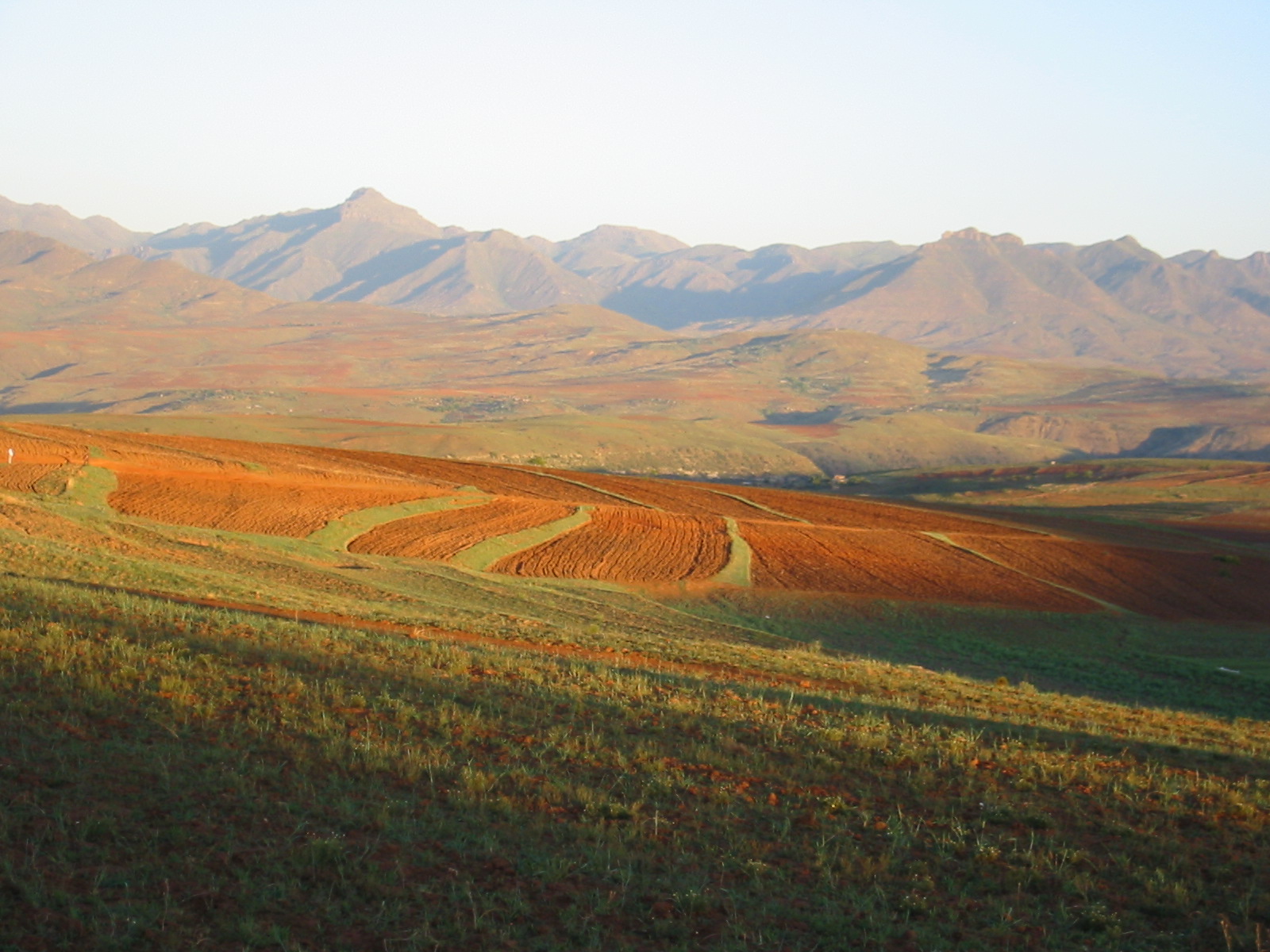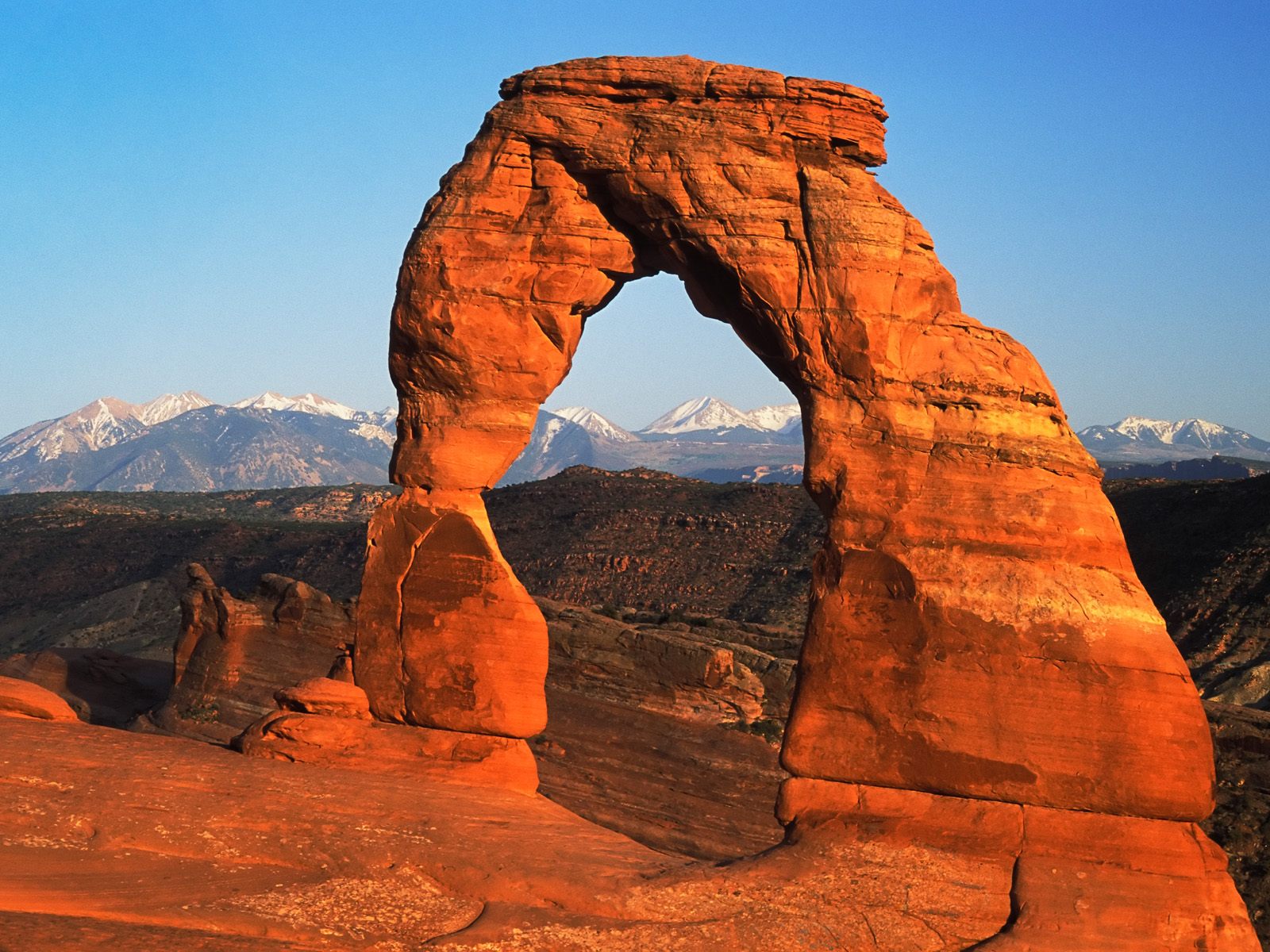The pastel landscapes are turning out very beautifully! Here are just a few examples of what the students in Miss Maurin's class have been doing. Each photo shows not only the student's work, but also the photo reference landscape the student was using for landscape inspiration!
Showing posts with label 2nd. Show all posts
Showing posts with label 2nd. Show all posts
Wednesday, September 28, 2011
Tuesday, September 27, 2011
2nd grade - Landscape
 We learned that landscape means 'picture of land'. We looked at lots of different types of landscapes to get lots of ideas for our own landscape painting.
We learned that landscape means 'picture of land'. We looked at lots of different types of landscapes to get lots of ideas for our own landscape painting.We reviewed that the sky comes all the way down to the ground and the ground comes up to meet the sky at a place called the HORIZON LINE.
 However, we also found examples of landscapes that had no sky in it at all!
However, we also found examples of landscapes that had no sky in it at all!Today we finished up our thumbnail sketches and drew our image onto a piece of colored paper that matched the main color in the reference photo chosen by the student. Then each pencil line was covered with a black crayon line. The crayon lines will help us control the next step of the project.
 Tomorrow, we will be using pastels to paint these landscapes. Pastels are soft chalk. They can be very messy, but are extremely fun! This is why we are using the black crayon. They are my favorite medium to use.
Tomorrow, we will be using pastels to paint these landscapes. Pastels are soft chalk. They can be very messy, but are extremely fun! This is why we are using the black crayon. They are my favorite medium to use.
Pastels seem to glow, and the crayon lines will help prevent blurring and smearing on the edges of objects in the pictures.
Wednesday, September 7, 2011
2nd grade - Nature Sculptures
Today we made nature sculptures inspired by land art. We looked at
artists such as, Andy Goldsworthy, Robert Smithson, and Richard Long.
The day before we went on a nature walk to collect beautiful items and
today we worked as groups to make some interesting shapes. It was a lot
of fun! - Mrs. Oxborrow
Tuesday, September 6, 2011
2nd grade - Nature and Art
Today the students in Miss Maurin's class took a walk in the park, gathering some objects from nature they could use in various art projects during the rest of the week. Stay tuned for more information to come!
Tuesday, August 30, 2011
2nd grade - Using How to Draw books
We will be using the How to Draw books for two days. These books are a lot of fun and very educational if used properly. You should not trace out of the book, although I know that can be fun. Follow the steps, thinking about blocking in simple shapes to begin the sketch, then adding detail until you have the picture you want.
After today, the How to Draw books will remain on the bookshelf for students to use if they finish an assignment or project early.
Thursday, August 25, 2011
The Elements of Design (Visual Art)
The Elements of Design (sometimes called the Elements of Art) are the basic building blocks of art. Artists use these elements to plan and design their artwork. There are seven of them. They are Shape, Line, Color, Texture, Value, Space, and Form.
Shape
 A shape is an enclosed figure. There is an inside and an outside. Shapes that have special mathematical rules are called geometric shapes. Examples of geometric shapes are circles, squares, rectangles, triangles, hexagons, etc.
A shape is an enclosed figure. There is an inside and an outside. Shapes that have special mathematical rules are called geometric shapes. Examples of geometric shapes are circles, squares, rectangles, triangles, hexagons, etc.
 Shapes that don't follow any special rules are called organic shapes. Organic shapes might look like something you recognize, like a leaf, or might simply look like a blob.
Shapes that don't follow any special rules are called organic shapes. Organic shapes might look like something you recognize, like a leaf, or might simply look like a blob.
Line
In math, a line is the shortest distance between two points. In art, though, we are more free with the definition. Lines are not closed figures. They are open ended and can move across the paper in many different ways. Lines that follow a predictable pattern are called geometric lines. Zig-zag lines and wavy lines are examples of geometric lines. Lines that are completely unpredictable are called organic lines. Lines can be thick or thin, straight or curvy.
Color
 We have been slowly learning about color every year since 1st grade. Colors are organized on a Color Wheel to help us see how they are related to each other. This year we are reviewing Primary, Secondary, and Tertiary. We will be learning Complimentary, Analogous, Monochromatic, and Triadic for the first time.
We have been slowly learning about color every year since 1st grade. Colors are organized on a Color Wheel to help us see how they are related to each other. This year we are reviewing Primary, Secondary, and Tertiary. We will be learning Complimentary, Analogous, Monochromatic, and Triadic for the first time.
Texture
Texture is the way something feels when you touch it, or how it would feel if you could touch it. If you can really feel it when you touch it, it is called Real Texture. If you can't feel it when you touch it, it is Implied Texture.
Value
Value is every tone of a color from the darkest of the dark, to the lightest of the light. When you arrange them in order from lightest to darkest, it is called a Value Scale. When black and white are arranged in a Value Scale it is sometimes called a Gray Scale, or a Key Scale.
Space
When we talk about space in the art room, we are not talking about outer space! Space means creating a feeling of depth. Near and far. Front and back. The illusion of space is created on a flat paper by using overlap, size and placement, and details.
Form
Forms are 3-D shapes.
You can create the illusion of form on a flat paper by shading to show where the light and shadow are, or you can use contour lines. Contour lines follow the surface of a 3-D object.
Shape
 A shape is an enclosed figure. There is an inside and an outside. Shapes that have special mathematical rules are called geometric shapes. Examples of geometric shapes are circles, squares, rectangles, triangles, hexagons, etc.
A shape is an enclosed figure. There is an inside and an outside. Shapes that have special mathematical rules are called geometric shapes. Examples of geometric shapes are circles, squares, rectangles, triangles, hexagons, etc. Shapes that don't follow any special rules are called organic shapes. Organic shapes might look like something you recognize, like a leaf, or might simply look like a blob.
Shapes that don't follow any special rules are called organic shapes. Organic shapes might look like something you recognize, like a leaf, or might simply look like a blob.Line
In math, a line is the shortest distance between two points. In art, though, we are more free with the definition. Lines are not closed figures. They are open ended and can move across the paper in many different ways. Lines that follow a predictable pattern are called geometric lines. Zig-zag lines and wavy lines are examples of geometric lines. Lines that are completely unpredictable are called organic lines. Lines can be thick or thin, straight or curvy.
Color
 We have been slowly learning about color every year since 1st grade. Colors are organized on a Color Wheel to help us see how they are related to each other. This year we are reviewing Primary, Secondary, and Tertiary. We will be learning Complimentary, Analogous, Monochromatic, and Triadic for the first time.
We have been slowly learning about color every year since 1st grade. Colors are organized on a Color Wheel to help us see how they are related to each other. This year we are reviewing Primary, Secondary, and Tertiary. We will be learning Complimentary, Analogous, Monochromatic, and Triadic for the first time.Texture
Texture is the way something feels when you touch it, or how it would feel if you could touch it. If you can really feel it when you touch it, it is called Real Texture. If you can't feel it when you touch it, it is Implied Texture.
Value
Value is every tone of a color from the darkest of the dark, to the lightest of the light. When you arrange them in order from lightest to darkest, it is called a Value Scale. When black and white are arranged in a Value Scale it is sometimes called a Gray Scale, or a Key Scale.
Space
When we talk about space in the art room, we are not talking about outer space! Space means creating a feeling of depth. Near and far. Front and back. The illusion of space is created on a flat paper by using overlap, size and placement, and details.
Form
Forms are 3-D shapes.
You can create the illusion of form on a flat paper by shading to show where the light and shadow are, or you can use contour lines. Contour lines follow the surface of a 3-D object.
Saturday, November 20, 2010
2nd grade Warm/Cool Paintings
After learning our 12 colored color wheel, the second grade classes learned that some colors remind us of WARM things. The warm colors are the reds, oranges, and yellows. Other colors remind us of COOL things. The cool colors are the greens, blues, and violets.
Next, we learned how to create a wet on wet watercolor wash. The goal was to get the colors to swirl around on the paper before sinking in and drying, giving the page a swirly tie-dyed look. To do this, first the paper is soaked, then the very wet watercolor is placed on it. The colors swirl around and make interesting color blends and shapes.
After the warm and cool watercolor washes are dry, students look at the swirly shapes, looking for exciting things in the WARM colored paper, and calm things in the COOL colored paper. It is a bit like looking for shapes in the clouds on a lazy summer afternoon. Finally, the found images are drawn in using a black marker or crayon.
Next, we learned how to create a wet on wet watercolor wash. The goal was to get the colors to swirl around on the paper before sinking in and drying, giving the page a swirly tie-dyed look. To do this, first the paper is soaked, then the very wet watercolor is placed on it. The colors swirl around and make interesting color blends and shapes.
After the warm and cool watercolor washes are dry, students look at the swirly shapes, looking for exciting things in the WARM colored paper, and calm things in the COOL colored paper. It is a bit like looking for shapes in the clouds on a lazy summer afternoon. Finally, the found images are drawn in using a black marker or crayon.
Subscribe to:
Posts (Atom)


















































+dig+pics+015.jpg)